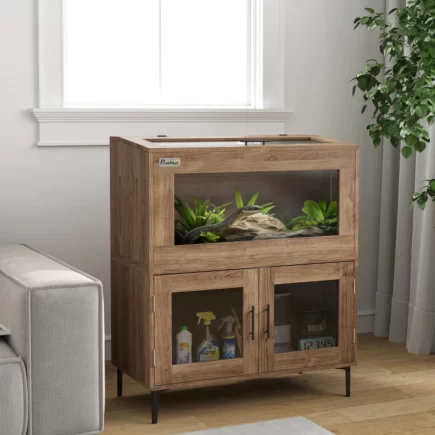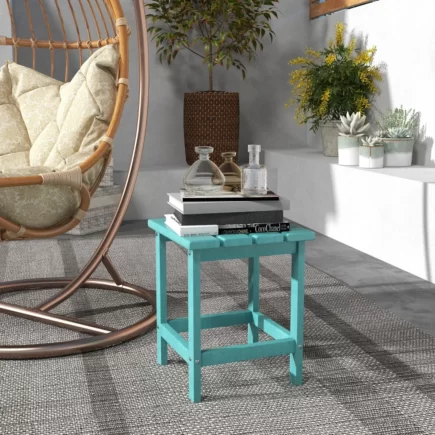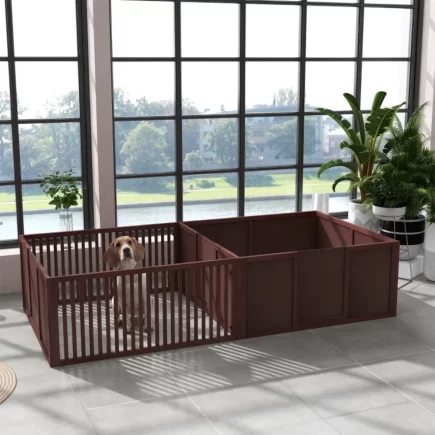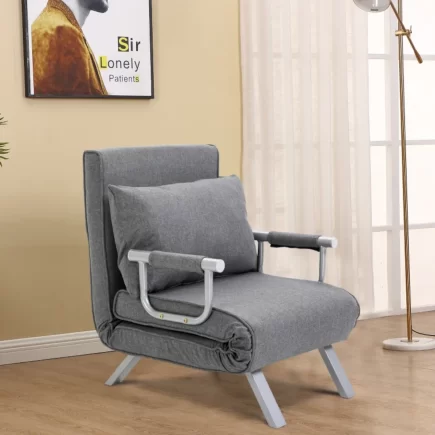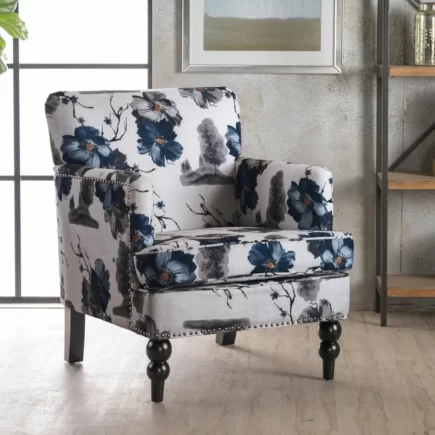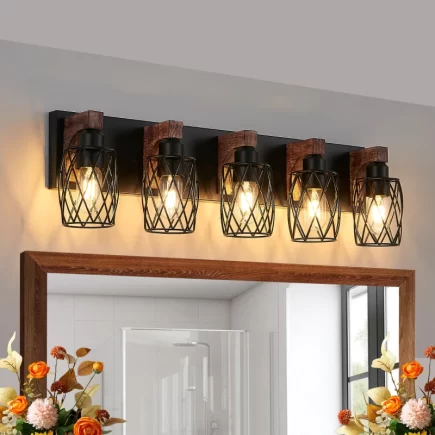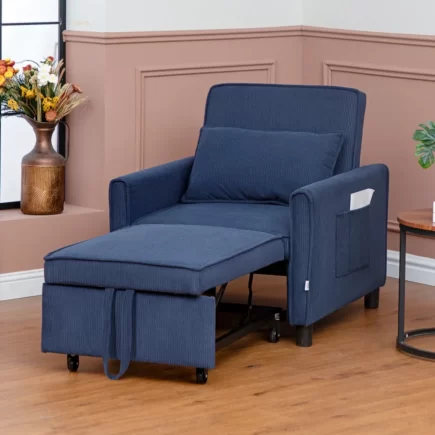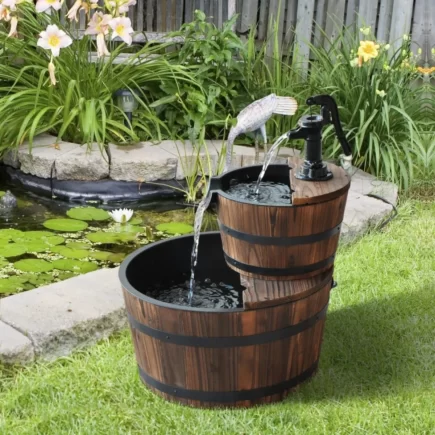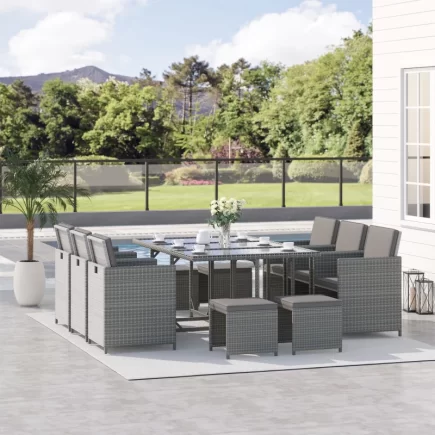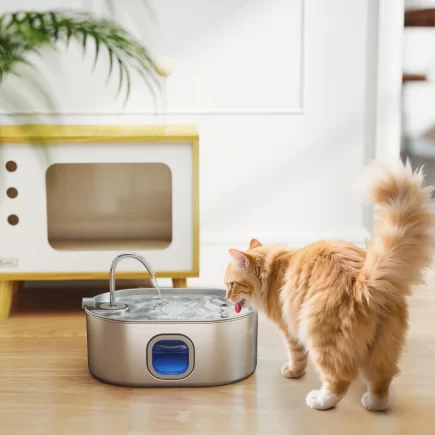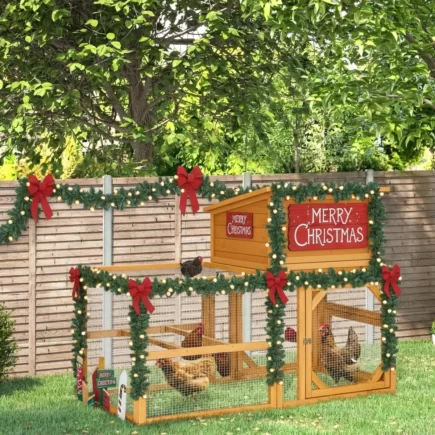
Coffee tables are no longer the default centrepiece of the living room. More and more homeowners are turning to softer, more versatile options like the ottoman. What was once seen as just a footrest or an extra seat has now become a stylish and functional focal point in modern interiors.
Ottomans bring warmth, texture, and flexibility into a space, offering both comfort and design appeal. But simply placing one in front of your sofa isn’t enough. To truly make an ottoman work as a coffee table, you need thoughtful styling, purposeful placement, and a setup that blends form and function. With the right approach, an ottoman can not only anchor your living room but also elevate it.
Use an Ottoman
Before we get practical, let’s define what you’re getting by making the switch:
| Usage | What It Means for You |
| Multipurpose | Use it as a table, seat, or footrest whatever you need most |
| Softer Aesthetic | Adds warmth and coziness to your living room |
| Kid-Friendly | No sharp corners = safer for little ones |
| Cozy Functionality | Ideal for movie nights, book reading, or casual hangouts |
| Easy Styling | Looks good with trays, textiles, and seasonal decor |
Techniques of Using Ottoman as Coffee Table
1. The Tray-Top

Ottomans are soft and cushioned by nature, which makes them less ideal for holding drinks, books, or decorative items unless you add a layer of support. To make your ottoman function like a true coffee table, you need to create a stable surface that can handle both style and everyday use.
Add a Tray (This Is Essential)
A tray isn’t just a nice-to-have, it’s a must. It transforms a cushioned surface into a practical one while bringing structure and style to your setup. Here’s what it does:
- A tray helps define the center visually and keeps your arrangement looking organized.
- It provides a firm base so drinks, candles, or vases stay upright on the soft ottoman top.
- Need the space for seating or to kick your feet up? Just lift the tray and you’re done.
For best results, choose a tray that contrasts with the ottoman’s material. Try a wooden or metal tray on a fabric ottoman, or a leather tray on a wooden one to create visual interest.
2. The Double Tray and Organizer Box Method

This method turns it into a practical storage and serving station, perfect for busy households.
- Use One Tray for Food and Drinks: Place a sturdy tray on your ottoman to hold items like coffee mugs, water glasses, snacks, or even a flower vase. This keeps spills off the fabric and makes serving easy.
- Add a Second Tray or a Storage Box: Use another tray or a stylish box to hold things like remote controls, phone chargers, pens, or reading glasses. This keeps small items from getting lost or making the space look messy.
Why This Setup Is Helpful
- It keeps your items organized by separating what you use for serving from what you use for storage.
- It helps your ottoman stay neat while making everything easy to grab when you need it.
- It turns your ottoman into a multi-purpose piece of furniture that does more than just look nice.
Ideal for
- Living rooms filled with tech, remotes, and entertainment gear
- Families, multitaskers, or anyone who likes everything in its place without sacrificing style.
3. The Book Stack Table Method

Don’t have a tray. No problem at all. You can still make your ottoman functional and stylish by using hardcover books and use it as coffee table. This method is simple, creative, and perfect for anyone who wants a quick setup that looks great.
How to Do It
- Choose two to four large hardcover books with attractive covers or neutral tones.
- Stack them neatly on one section of your ottoman to create a flat, stable surface.
- Use the top book as a mini table to hold lightweight items such as a coffee mug, candle, decorative object, or small plant.
This Works Well
- It adds height and dimension, giving your ottoman a layered and styled appearance.
- It creates a stable surface without needing any special tools or accessories.
- It’s easy to move, rearrange, or update depending on the season or your mood.
Best For
- Homes focused on visual style or curated design
- People who don’t have trays but want their ottoman to serve as a coffee table
This method offers a quick, beautiful solution that blends function with charm using just the books you already have.
4. Throw and Centerpiece Method

Looking for a soft, stylish way to turn your ottoman into a coffee table without making it feel too structured? This method focuses on texture and visual appeal while still offering basic functionality.
How to Do It
- Choose a clean, flat throw blanket in a colour or texture that complements your ottoman and overall room design.
- Neatly drape the throw across the top of the ottoman to create a defined surface area. Smooth out any wrinkles so it lies flat.
- Add a low-profile centerpiece such as a potted plant, a candle, or a small decorative sculpture to bring balance and interest.
- Keep a few coasters nearby so you can safely set down drinks without damaging the fabric.
This Method Works
- It adds softness, warmth, and texture to the space, making the ottoman feel inviting.
- It helps define the surface area of the ottoman without using trays or boxes.
- It provides just enough structure for light use while keeping the look relaxed and elegant.
Best For
- Homes with a decorative or minimalist style
- Occasional use as a table, such as for drinks or a book
This is a perfect solution if you want your ottoman to feel cozy and curated, without turning it into a full-time tabletop.
5. Covered Ottoman with Hard Surface Insert

If your ottoman is extra soft and plush, it might not offer enough support for everyday tasks. This method adds a firm surface on top so your ottoman can handle more structured use, like dining or working.
How to Set It Up
- Find a large flat item such as a wooden cutting board, a piece of plywood, or an MDF board that fits the top of your ottoman.
- Lay the board directly on the ottoman to create a hard surface.
- Cover the board with a clean, neutral cloth, table runner, or even a stylish placemat to keep things looking polished and intentional.
- Use this new surface for a variety of tasks like writing, sketching, or setting down meals and drinks.
This Method Is Useful
- It transforms your ottoman into a functional table with a solid, stable top.
- It’s perfect for activities that require a firm surface like writing, drawing, or working on a laptop.
- It allows you to eat comfortably while watching TV without worrying about spills or tipping.
Best For
- People who use the ottoman as a casual dining table
- Anyone who enjoys journaling, sketching, or working from the couch
To prevent the board from sliding, place small furniture grippers or non-slip pads underneath. This keeps everything steady and safe while in use.
6. The Split-Purpose Ottoman Table

Want your ottoman to serve multiple needs at once? This method allows you to balance style, storage, and comfort by dividing the surface into dedicated zones. It’s perfect for shared spaces where people use the ottoman differently.
How to Do It
- Mentally divide your ottoman into three equal sections.
- Use the first third for a tray or a stack of books to give it a decorative and functional touch.
- Keep the second third open and clear so people can comfortably rest their feet.
- Use the last third to drape a stylish throw and place a small basket for storage. The basket can hold items like remote controls, chargers, or magazines.
This Works Well
- It lets you enjoy both practicality and relaxation without one interfering with the other.
- It supports different needs at the same time, whether someone wants to kick back or grab a snack.
- It keeps the ottoman looking organized, even when it’s doing a lot.
Best For
- Couples who use the ottoman in different ways
- Families who need shared space to be both cozy and useful
This setup turns your ottoman into a flexible, multi-use piece that works for everyone in the room.
Avoid These Common Mistakes
Using an ottoman as a coffee table can be stylish and functional, but small mistakes can quickly make it frustrating. Here are a few things to watch out for so your setup actually works and looks great.
Not Using a Tray
This is the most common issue. Without a tray, you lose the firm surface needed to hold drinks, snacks, or decorations. Items can tip over, slide, or sink into the cushion, making your ottoman more of a hassle than a help. Always start with a tray to create a flat, stable foundation.
Decorating with Fragile Items
If your ottoman also serves as a footrest or extra seating, skip the delicate or heavy decorations. Glass vases, ceramic pieces, or anything breakable will have to be moved often and can easily fall or get damaged. Stick to soft or lightweight décor that can be moved without worry.
Overlooking the Height
The height of your ottoman matters more than you might think. It should be close to the same height as your sofa seat. If it’s much taller, it can feel bulky and uncomfortable. If it’s too low, it may look out of place and be awkward to use. Always check the proportions before choosing your ottoman.
By avoiding these common missteps, you can turn your ottoman into a stylish and practical centrepiece that works beautifully in your space.
Form Meets Function with Flair
An ottoman doesn’t just take the place of a traditional coffee table, it transforms it into something more comfortable, more flexible, and more personal. With a few thoughtful choices, smart styling, and a practical setup, your ottoman can become the coffee table and centrepiece of your living room. It’s not just about following trends, it’s about creating a space that works for you.
You’re not bound by old rules or rigid furniture layouts. You’re designing for comfort, beauty, and everyday ease. And if your ideal space includes a soft, stylish piece that doubles as a table and a seat, then an ottoman coffee table is exactly what you need. Explore Aosom’s Ottomans or Coffee Tables collections to find pieces that fit your lifestyle and elevate your space with ease.
FAQs
1. Can you use a round ottoman as a coffee table?
Yes, a round ottoman works beautifully as a coffee table. Just choose a large, round tray or use multiple smaller trays to stabilize items. This setup complements circular room layouts and creates a softer, more welcoming feel.
2. What type of ottoman material is best for coffee table use?
Faux leather or tightly woven fabric is ideal because it resists stains and provides a smoother surface. Avoid plush velvet or tufted upholstery if you plan to use trays and decorations regularly. Durability and cleanability should guide your choice.
3. Can I use a storage ottoman as a coffee table too?
Absolutely. Storage ottomans offer hidden compartments for blankets, games, or remotes while still serving as a tabletop. Just add a tray or structured surface to make the top more functional.
4. How do I prevent the tray from sliding on the ottoman?
Use non-slip drawer liners, rubber shelf grip pads under the tray to keep it stable. These additions prevent spills and keep your setup looking neat even with daily use.
5. Is it okay to put hot drinks on an ottoman used as a coffee table?
It’s fine as long as you use coasters or a heat-resistant tray. Direct heat from mugs can warp or stain fabric, especially on softer ottoman surfaces. Always protect the upholstery to maintain its look and lifespan.

